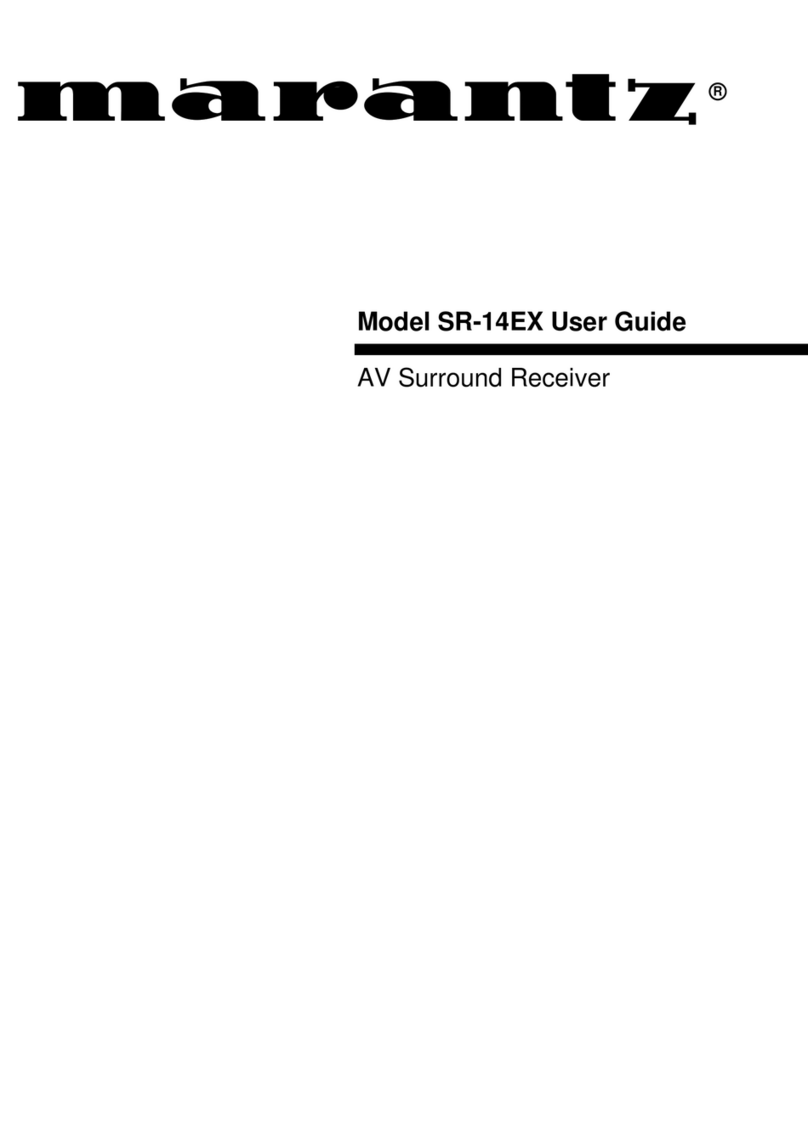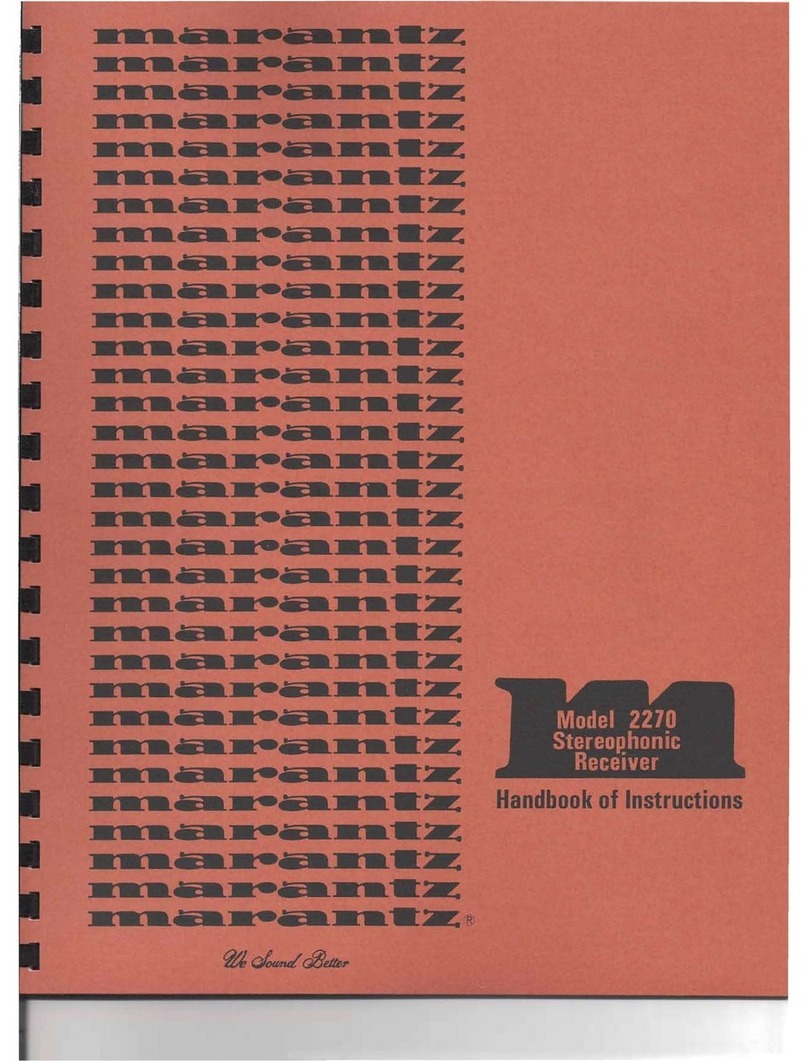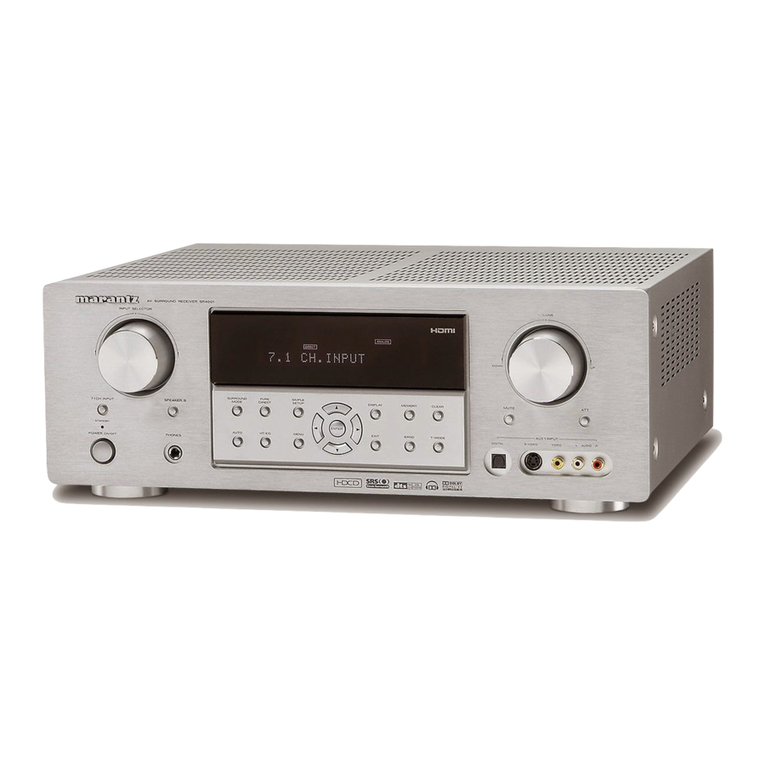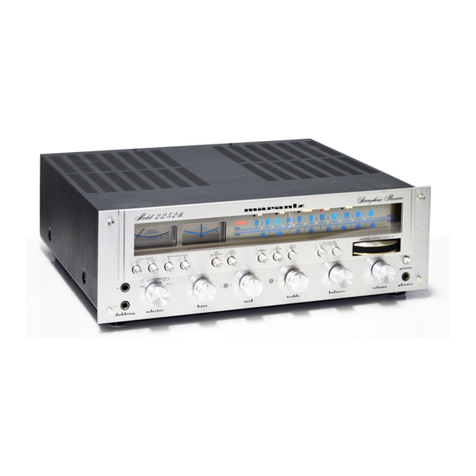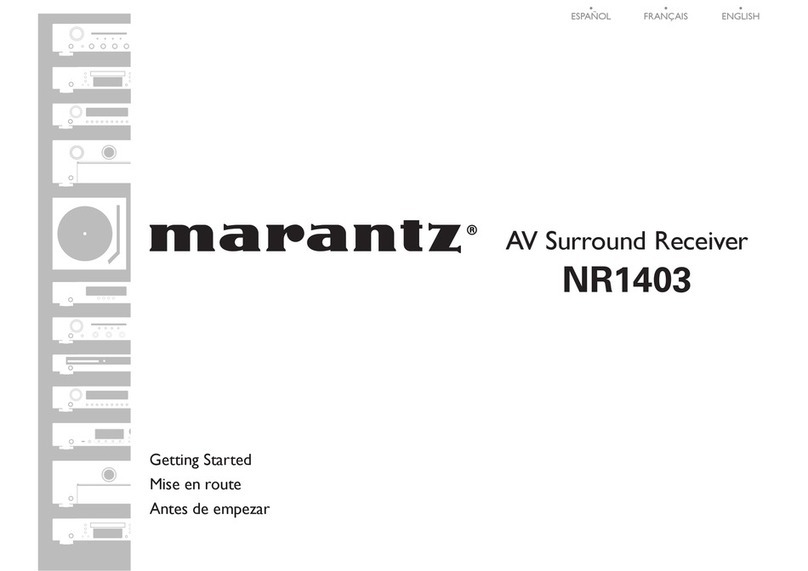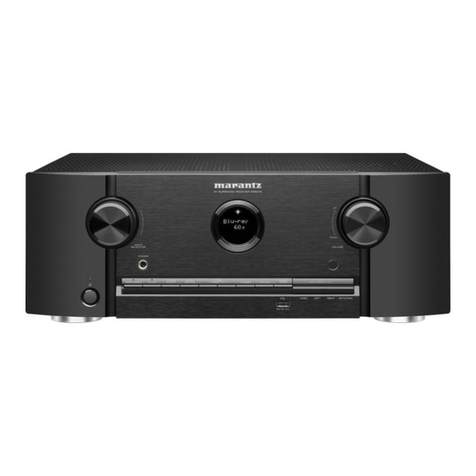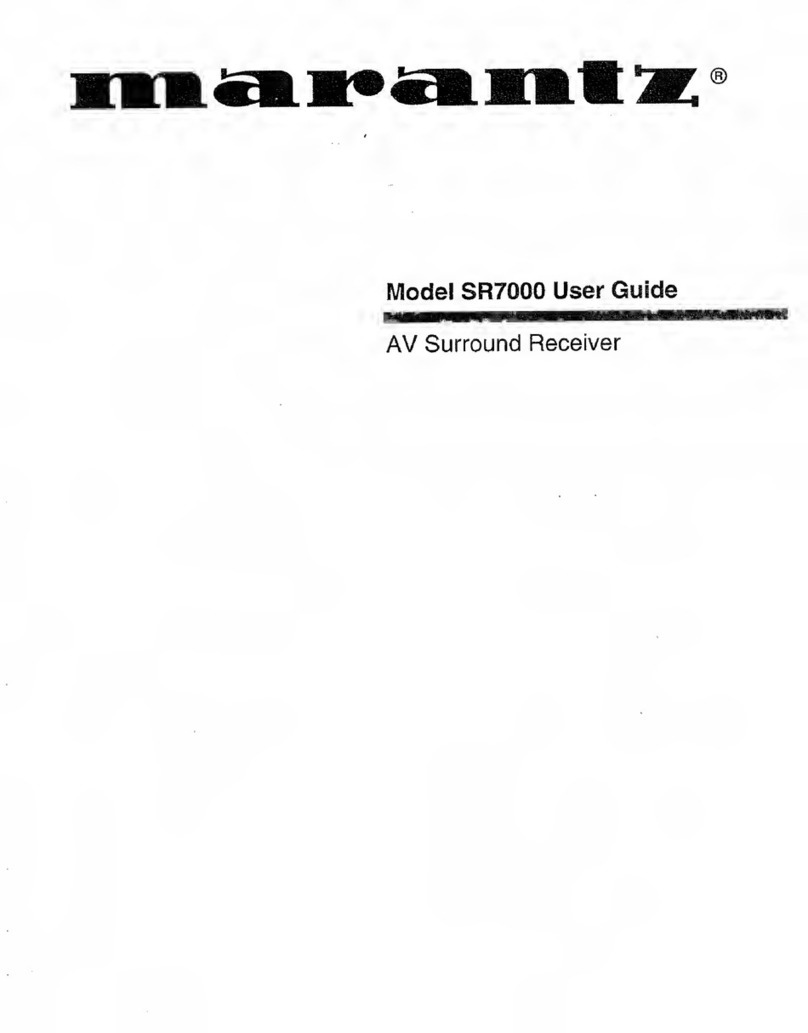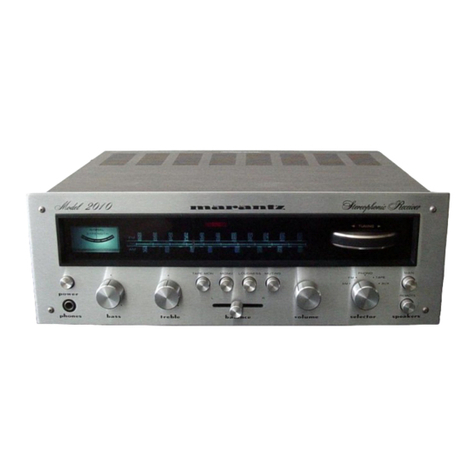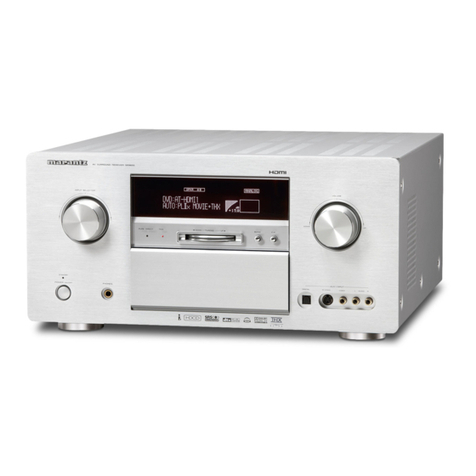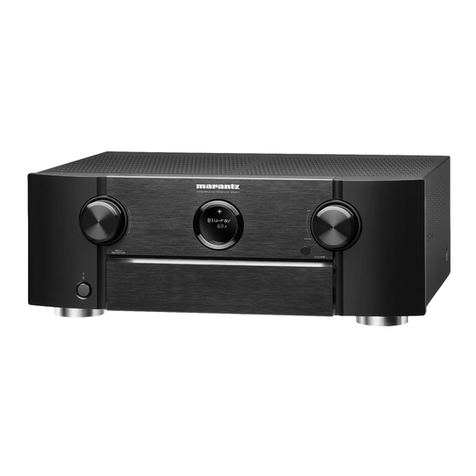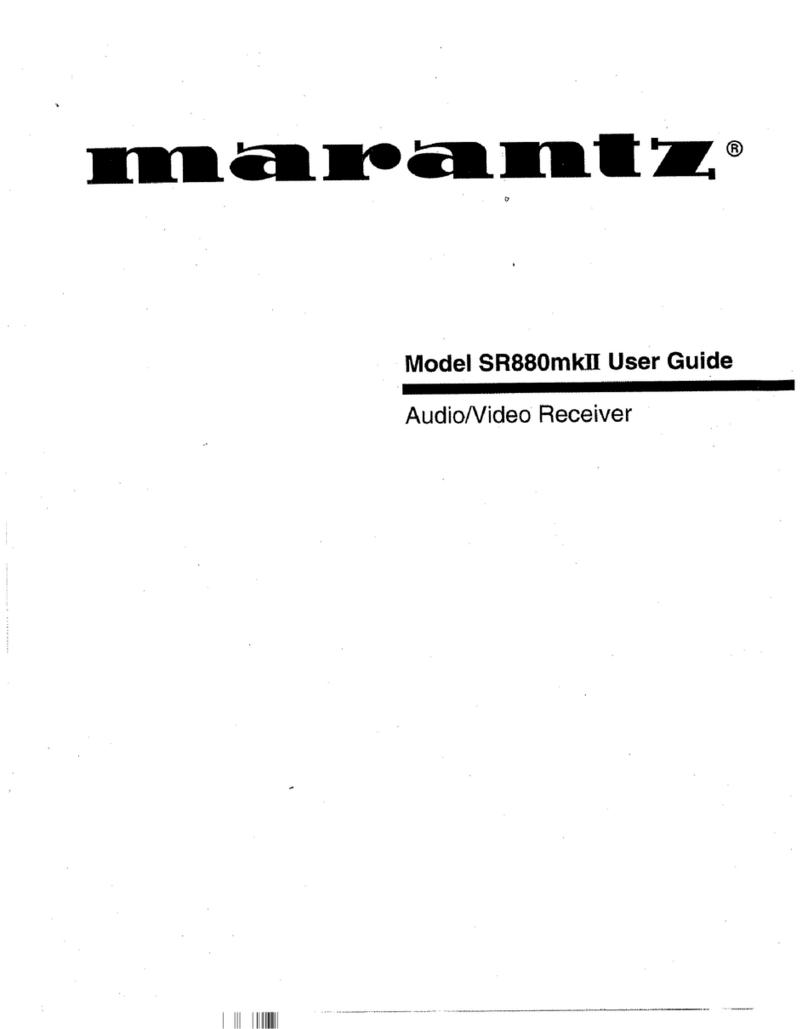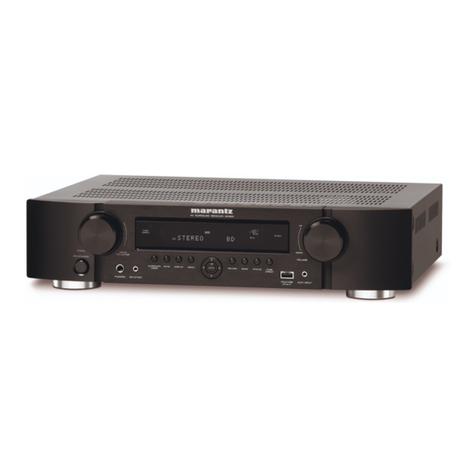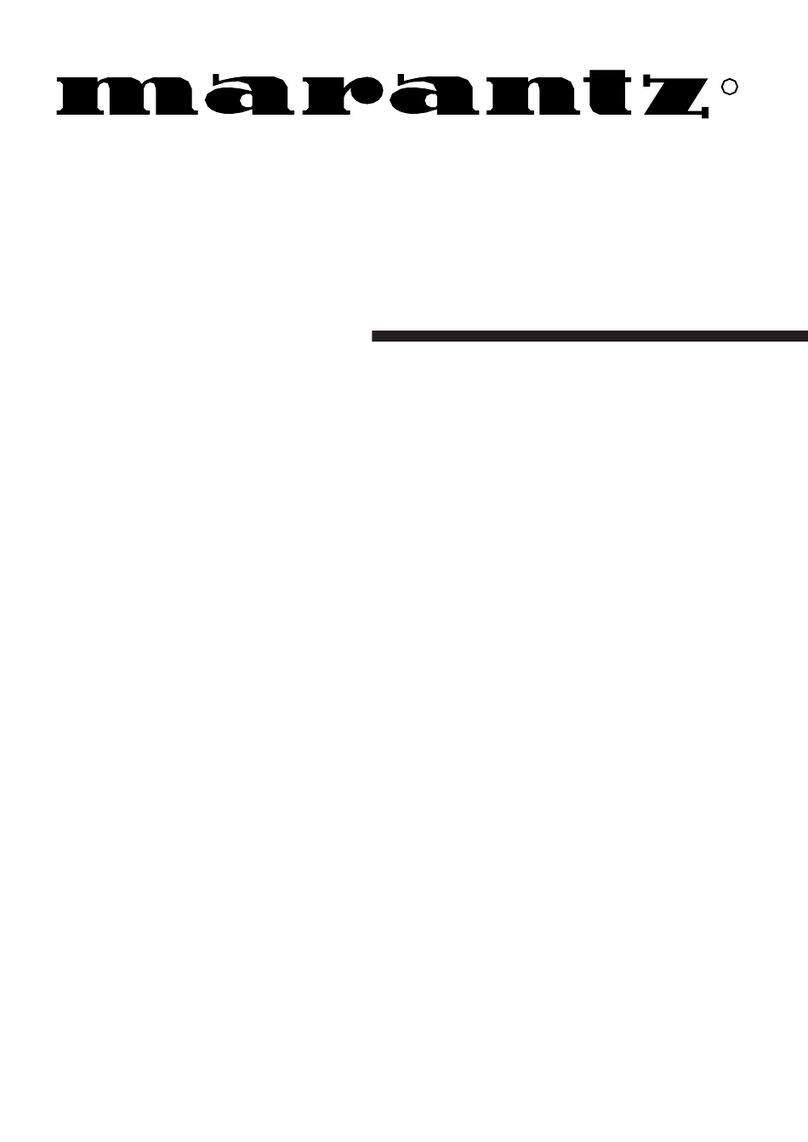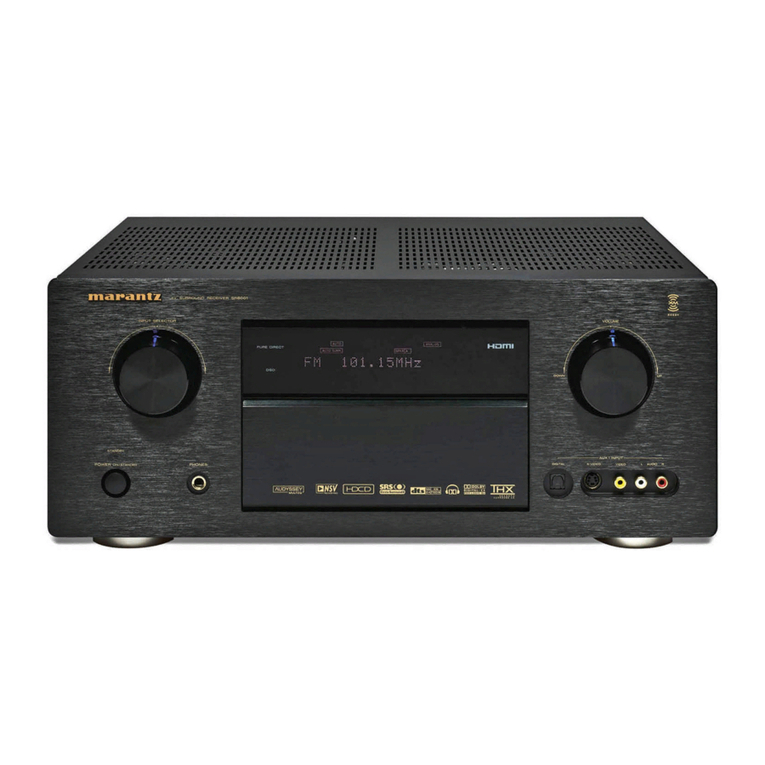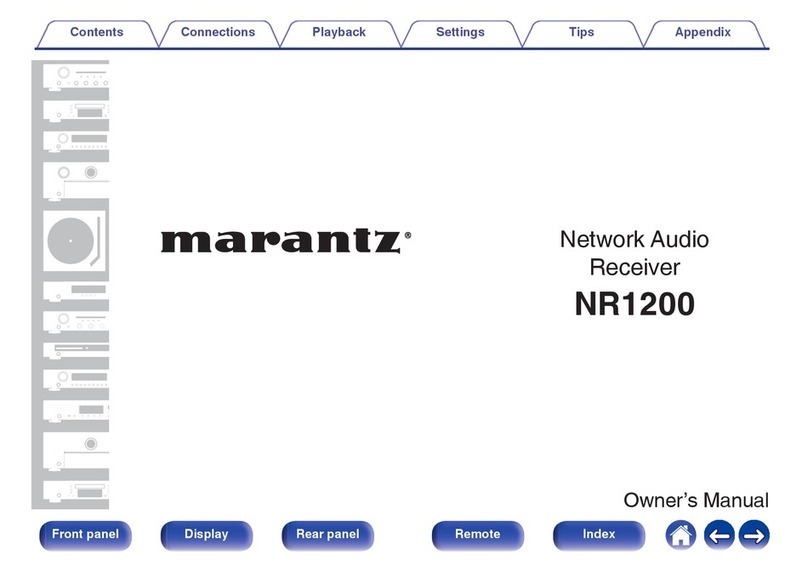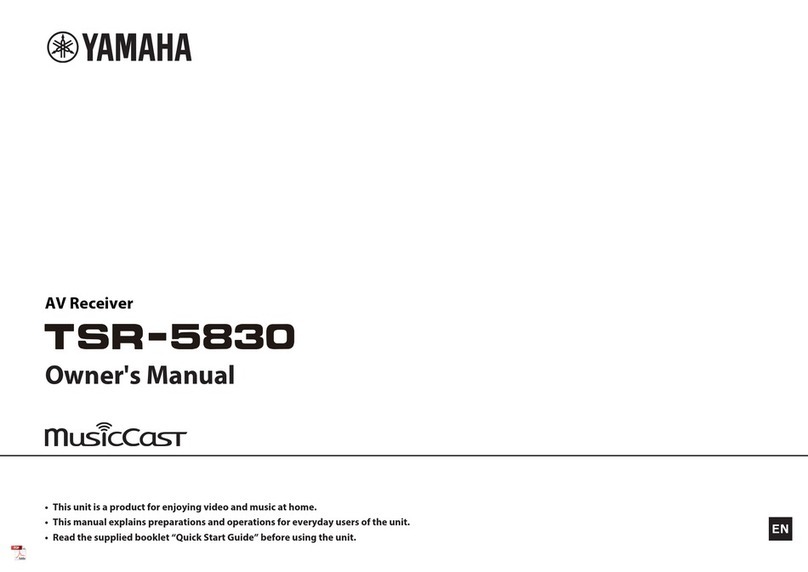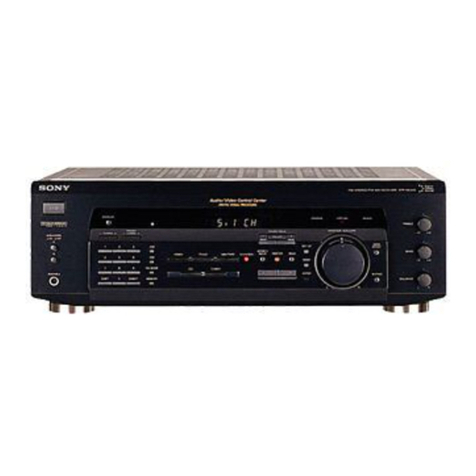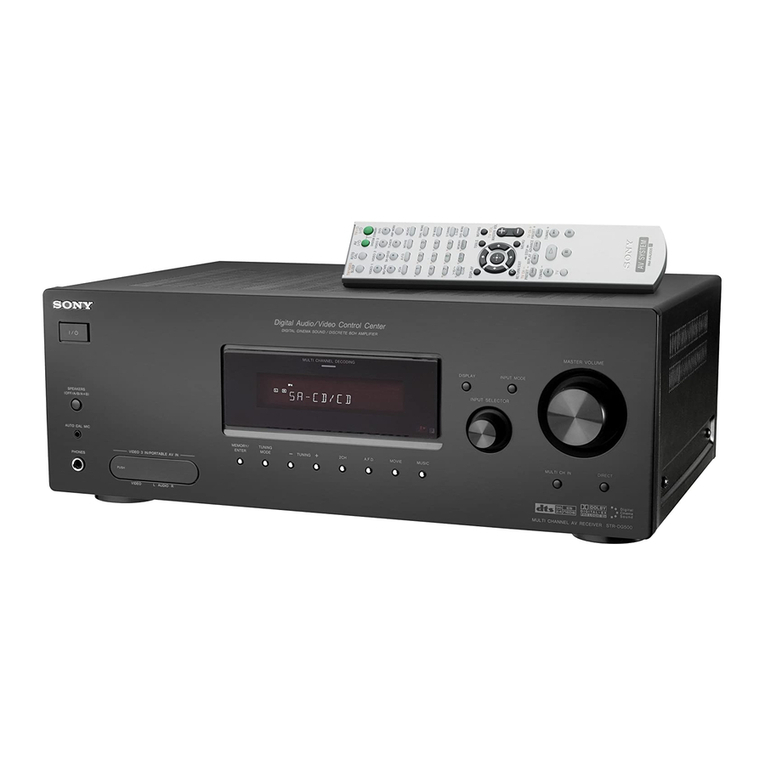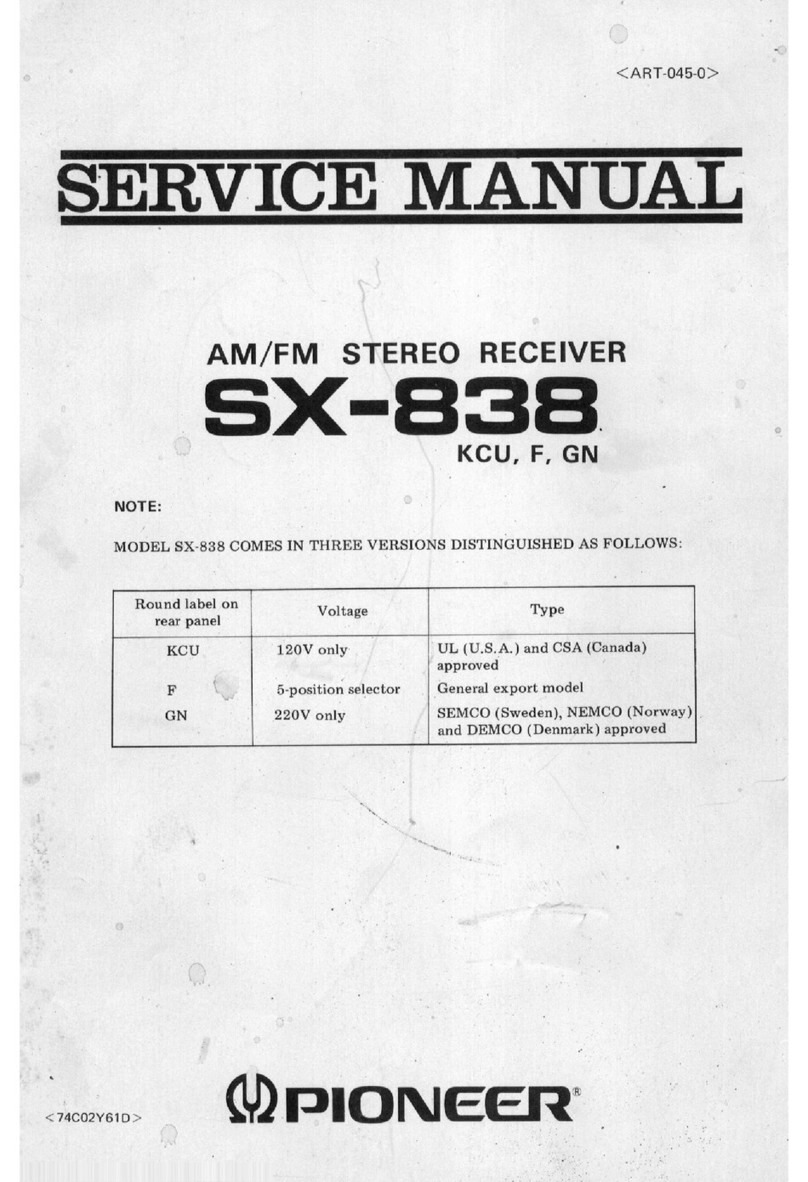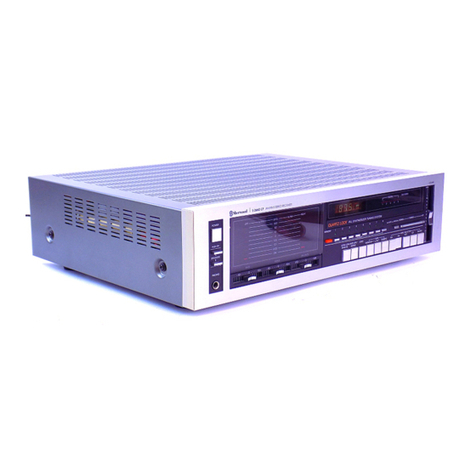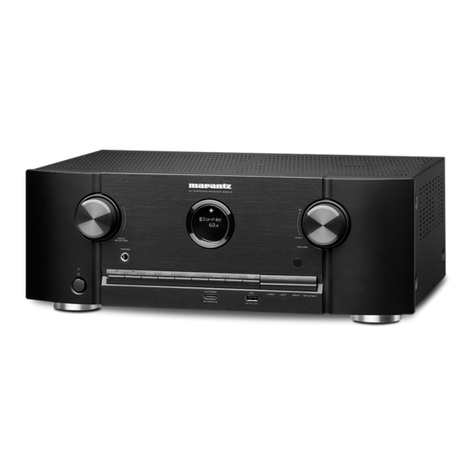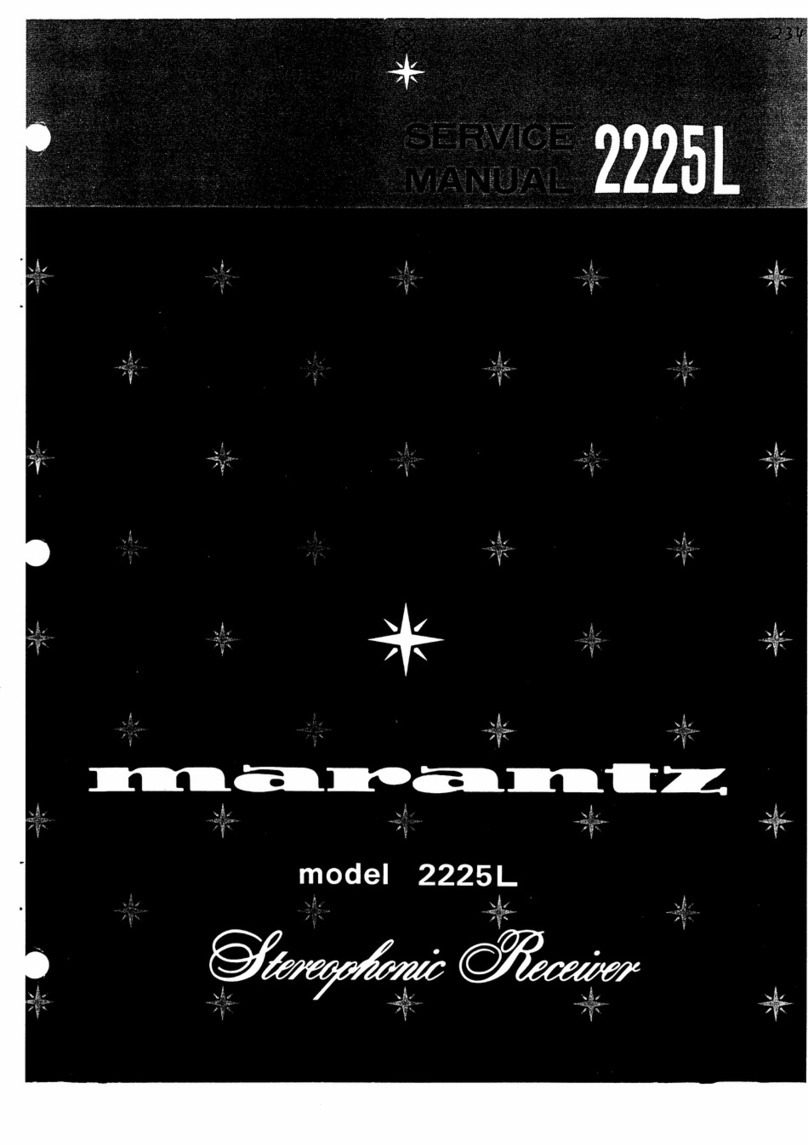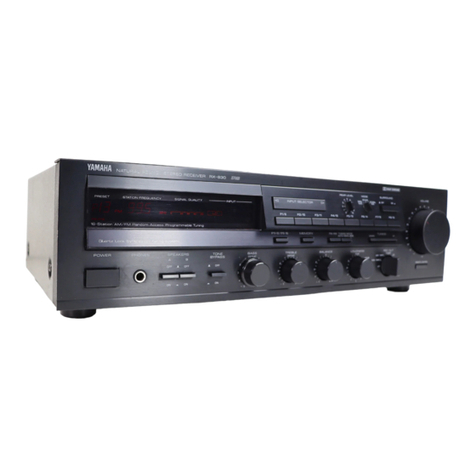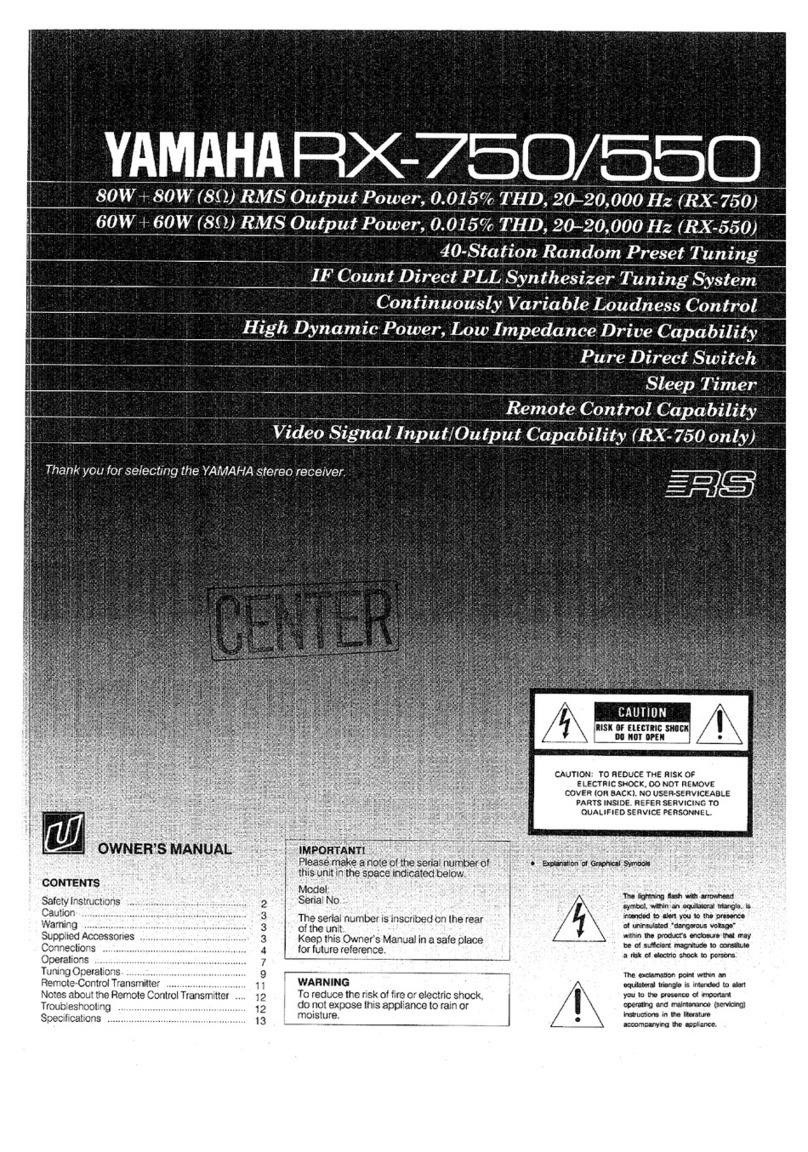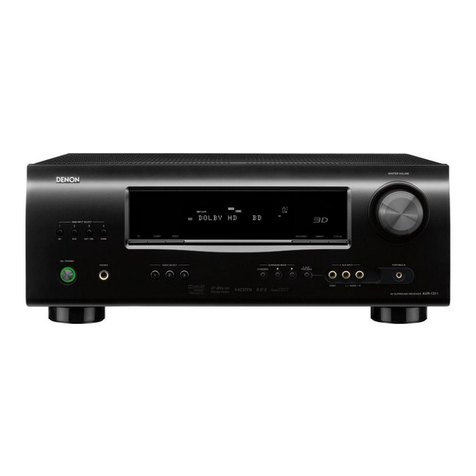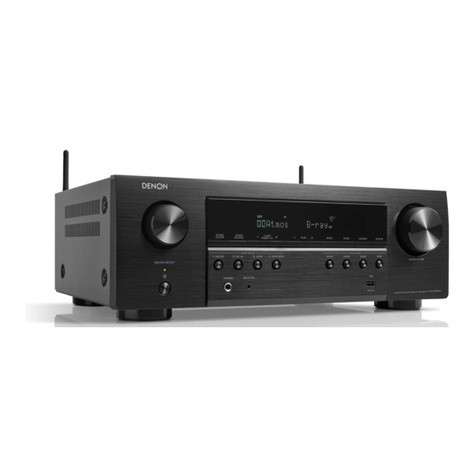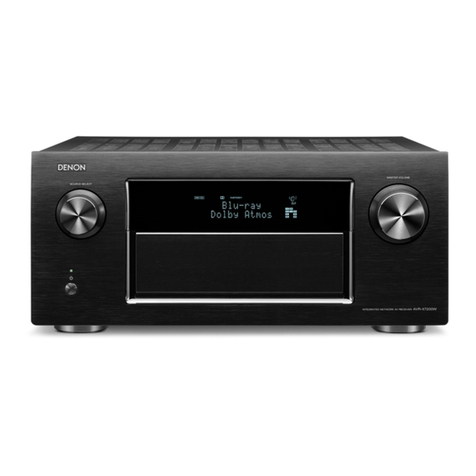3. AM ALIGNMENT PROCEDURE (~
3.1 AM IF Alignment ( )
1. Connect a sweep generator to the J153 and an alignment scope to the test point B.
2. Rotate each core of IF transformer L153 for maximum height and flat top symmetrical
response.
3.2 AM Frequency Rangeand Tracking Alignment
1. Set AM signal generator to 515 kHz. Turn the tuning capacitor fully closed (place the tuning
pointer at the low end) and adjust the oscillator coil L152 for maximum audio output.
2. Set the signal generator to 1650 kHz. Placethe tuning pointer in the high frequency end and
adjust the oscillator trimmer on the oscillator tuning capacitor for maximum audio output.
3. Repeat steps 1 and 2 until no further adjustment is necessary.
4. Set the generator to 600 kHz and tune the receiver to the same frequency anq adjust a slug
core of AM ferrite rod antenna and RF coil L151 for maximum output.
5. Set the generator to 1400 kHz and tune the receiver to the samefrequency and adjust both
trimming capacitors of antenna and RF tuned circuit for maximum output.
6. Repeat steps 4 and 5 until no further adjustment is necessary.
Note: During tracking alignment reduce the signal generator output as necessaryto avoid AGC
action.
3.3 AM Signal Strength Meter Alignment
Set an AM signal generator to 1000 kHz at 5k1-N, and adjust R178 so that the signal
strength meter may read 90% of the full scale.
,
1
3
4. FM ALIGNMENT PROCEDURE
1. ,Connect an FM signal generator to the FM ANTENNA terminals and an oscilloscope and an
audio distortion analyzer to the TAPE OUTPUT jacks on the rear panel.
2. Set the FM SG to 87 MHz and provide about 3 to 5J.1.V.Placethe tuning pointer at the low
frequency end by rotating the tuning knob and adjust the core of oscillator coil L104 to
obtain maximum audio output.
3. Set the FM SG to 109 MHz and provide about 3 to 5J.1.Voutput. Rotate the tuning knob and
place the tuning pointer at the high frequency end and adjust the trimming capacitor C106
for maximum output.
4. Repeat steps 2 and 3 until no further adjustment is necessary.
5. Set the FM SG to 90 MHz and tune the receiver to the same frequency. Decreasesignal
generator output until the audio output level decreases with the decreasing generator
output. Adjust the antenna coil L101, RF coils L102 and L103 and IF transformer L105 for
minimum audio distortion.
6. Set the FM SG to 106 MHz and tune the receiver to the same frequency. Adjust the trim-
ming capacitor C102, C104 and C105 for minimum distortion.
7. Repeat steps 5 and 6 until no further adjustment is necessary.
8. Adjust the secondary core (upper) of discriminator transformer L201 sothat the center tun-
ing meter pointer indicates its center at no signal applied. Set the FM SG to 98 MHz and
increase its output level I kJ.l.Vand tune the receiver to the samefrequency sothat the center
tuning meter pointer indicates its center.
Adjust the primary core (lower) of L201 for minimum distortion.
9. Set the FM SG to 98 MHz at 1000 kJ.l.V,and adjust R374 so that the signal strength meter
may read 90% ofthe full scale.
